High heterogeneity of malaria transmission and a large sub-patent and diverse reservoir of infection in Wusab As Safil district, Republic of Yemen
- PMID: 27059182
- PMCID: PMC4826523
- DOI: 10.1186/s12936-016-1249-y
High heterogeneity of malaria transmission and a large sub-patent and diverse reservoir of infection in Wusab As Safil district, Republic of Yemen
Abstract
Background: Yemen remains the country with the highest malaria transmission within the Arabian Peninsula and a source of imported cases to neighbouring countries.
Methods: This study collected samples from individuals resident in a valley in Western Yemen as a baseline to examine infection prevalence for a future trial. As well as rapid diagnostic test (RDT) and microscopy, a filter paper blood spot was collected for molecular and serological analyses.
Results: Samples were collected from 2261 individuals from 12 clusters across a study area of approximately 100 km(2). Plasmodium falciparum infection prevalence was 12.4, 11.1 and 19.6% by RDT, microscopy and polymerase chain reaction (PCR), respectively. RDT and microscopy did not detect 45% of infections present, suggesting many infections were low-density. Infection prevalence and seroprevalence were highly heterogeneous between clusters, with evidence of higher exposure in clusters close to the wadi. The mean multiplicity of infection (MOI) was 2.3 and high heterozygosity and allelic richness were detected.
Conclusions: This highly diverse parasite population suggests a high degree of transmissibility and coupled with the substantial proportion of low-density infections, may pose challenges for malaria control and elimination efforts.
Keywords: Heterogeneity; Heterozygosity; Malaria transmission; Molecular; Multiplicity of infection; PCR.
Figures
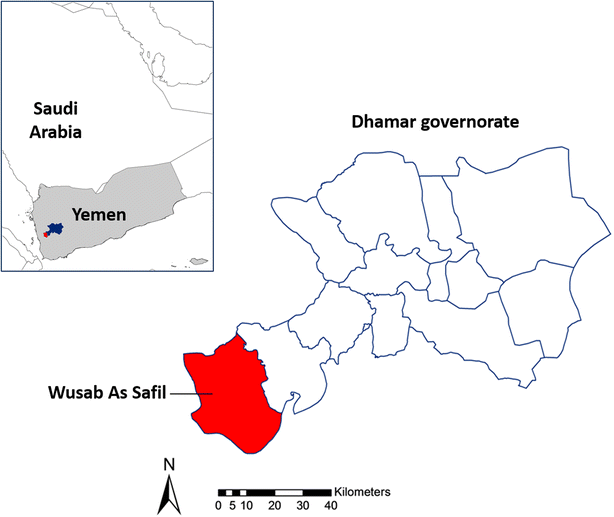
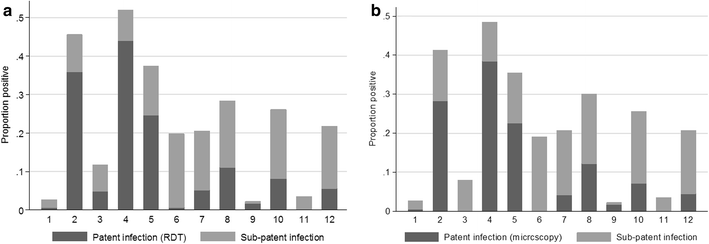
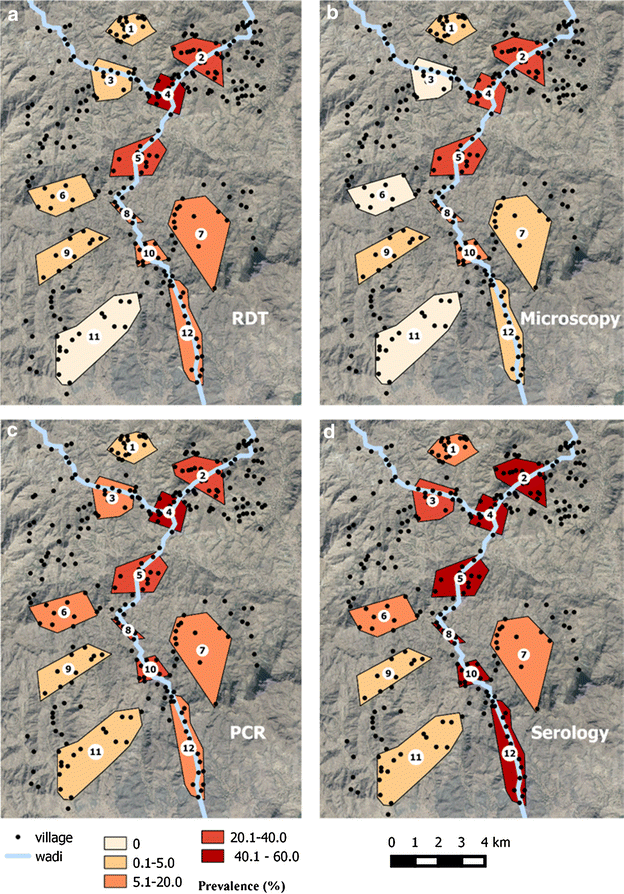

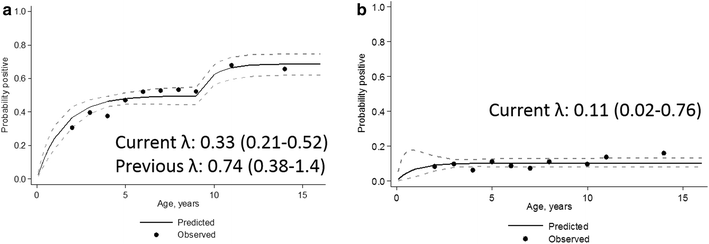
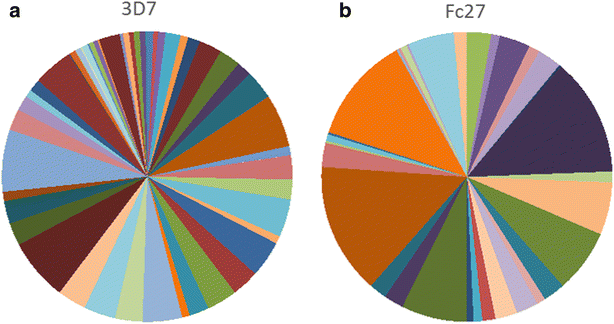
Similar articles
-
Detection of a substantial number of sub-microscopic Plasmodium falciparum infections by polymerase chain reaction: a potential threat to malaria control and diagnosis in Ethiopia.Malar J. 2013 Oct 3;12:352. doi: 10.1186/1475-2875-12-352. Malar J. 2013. PMID: 24090230 Free PMC article.
-
A large proportion of asymptomatic Plasmodium infections with low and sub-microscopic parasite densities in the low transmission setting of Temotu Province, Solomon Islands: challenges for malaria diagnostics in an elimination setting.Malar J. 2010 Sep 7;9:254. doi: 10.1186/1475-2875-9-254. Malar J. 2010. PMID: 20822506 Free PMC article.
-
Use of different transmission metrics to describe malaria epidemiology in the highlands of western Kenya.Malar J. 2015 Oct 26;14:418. doi: 10.1186/s12936-015-0944-4. Malar J. 2015. PMID: 26502920 Free PMC article.
-
Microscopic and molecular evidence of the presence of asymptomatic Plasmodium falciparum and Plasmodium vivax infections in an area with low, seasonal and unstable malaria transmission in Ethiopia.BMC Infect Dis. 2015 Aug 5;15:310. doi: 10.1186/s12879-015-1070-1. BMC Infect Dis. 2015. PMID: 26242405 Free PMC article.
-
Folic acid supplementation and malaria susceptibility and severity among people taking antifolate antimalarial drugs in endemic areas.Cochrane Database Syst Rev. 2022 Feb 1;2(2022):CD014217. doi: 10.1002/14651858.CD014217. Cochrane Database Syst Rev. 2022. PMID: 36321557 Free PMC article.
Cited by
-
High prevalence of asymptomatic and subpatent Plasmodium falciparum infections but no histidine-rich protein 2 gene deletion in Bouaké, Côte d'Ivoire.Sci Rep. 2024 Aug 17;14(1):19060. doi: 10.1038/s41598-024-70215-x. Sci Rep. 2024. PMID: 39154104 Free PMC article.
-
Anti-malarial seroprevalence assessment during an elimination programme in Chabahar District, south-eastern Iran.Malar J. 2016 Jul 22;15(1):382. doi: 10.1186/s12936-016-1432-1. Malar J. 2016. PMID: 27448606 Free PMC article.
-
A scoping review on the field validation and implementation of rapid diagnostic tests for vector-borne and other infectious diseases of poverty in urban areas.Infect Dis Poverty. 2018 Sep 3;7(1):87. doi: 10.1186/s40249-018-0474-8. Infect Dis Poverty. 2018. PMID: 30173662 Free PMC article.
-
Differential impact of malaria control interventions on P. falciparum and P. vivax infections in young Papua New Guinean children.BMC Med. 2019 Dec 9;17(1):220. doi: 10.1186/s12916-019-1456-9. BMC Med. 2019. PMID: 31813381 Free PMC article.
-
Increased prevalence of pfdhfr and pfdhps mutations associated with sulfadoxine-pyrimethamine resistance in Plasmodium falciparum isolates from Jazan Region, Southwestern Saudi Arabia: important implications for malaria treatment policy.Malar J. 2020 Dec 2;19(1):446. doi: 10.1186/s12936-020-03524-x. Malar J. 2020. PMID: 33267841 Free PMC article.
References
-
- WHO . World Malaria Report: Yemen country profile. Geneva: World Health Organization; 2013.
Publication types
MeSH terms
Grants and funding
LinkOut - more resources
Full Text Sources
Other Literature Sources
Research Materials

